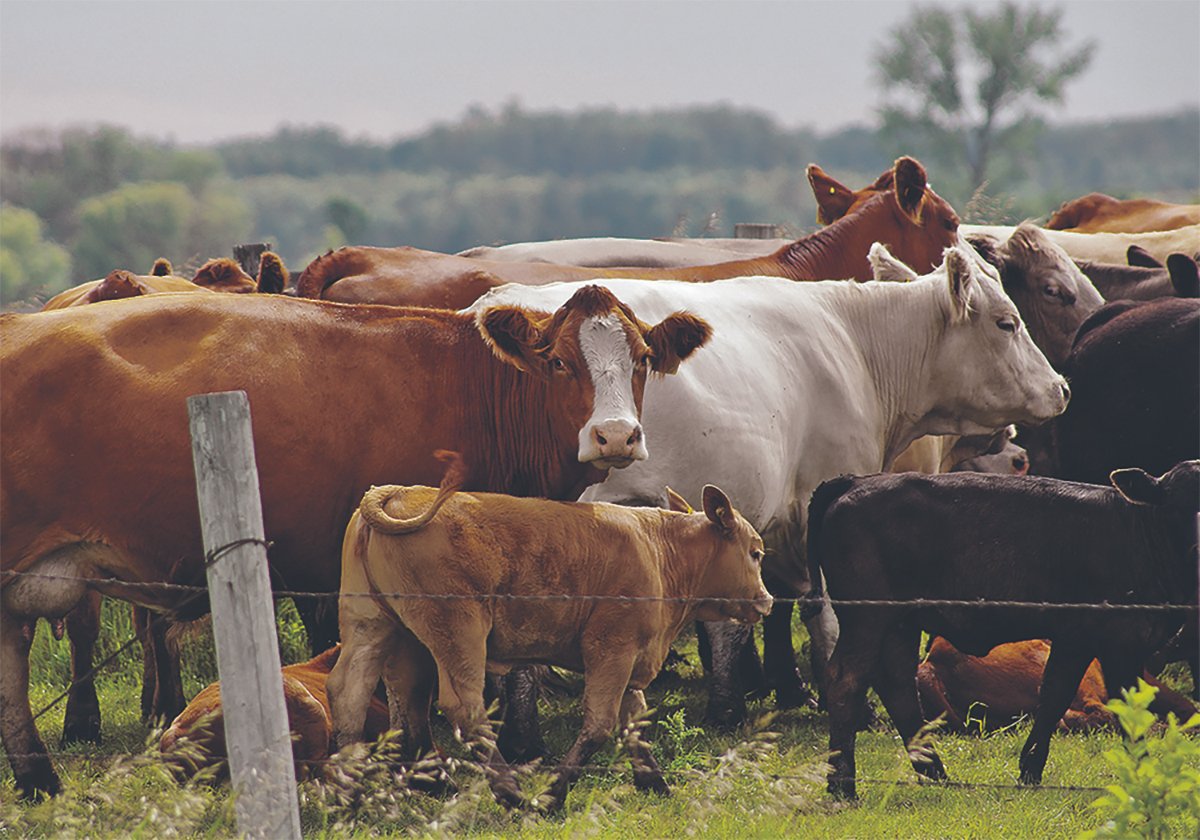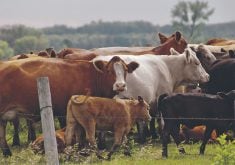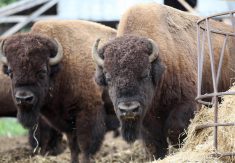Green manure and tillage techniques, intercropping, soil amendments, hemp processing and great fellowship and food were part of the circle of learning at recent field days designed for organic producers.
At the Organic Crop Improvement Association Chapter 5 field day, Gerard Draude of Lake Lenore, Sask., showed us how he handles alfalfa. He harvests a seed crop in the second year and in the third year, when most producers make a cut for hay, Gerard cuts alfalfa with a mulching type mower that spreads the residue evenly over the field.
Read Also

High prices see cow-calf producers rushing to incorporate
Farm accountants are reporting a steady stream of cow-calf producers rushing to get their operations incorporated ahead of selling their calves this fall.
He allows the alfalfa to regrow through the mulch and plows it down, when it begins to flower. Draude feels that this improves his soil fertility, adding more nitrogen than a simple mid-season plow down of alfalfa.
Larry Marshall, who farms near Spalding, Sask., showed us his tillage experiments. This year, he direct-seeded lentils. The crop looked strong despite weeds. Marshall planned to reduce weed seed set by overcutting, which trims the weeds above the crop canopy.
He also showed us his intercropping project. Weeds have been problematic in his flax crops so this year he seeded a low rate of fall rye with the flax. He is hoping the added competition and the allelopathy of the rye will suppress weeds.
Darwin Leach of Agriculture Canada’s research centre in Melfort, Sask., explained research that he and Sukhdev Malhi are doing to test organic inputs at Marshall’s farm. Although it is too early to make recommendations, producers were able to compare the results of adding compost, wood ash, alfalfa pellets, rock phosphate, Penicillium bilaii and intercropping with peas.
At Watson, we toured Holmes Enterprises, which is hulling hemp to produce hemp hearts, a nutritious food. The plant also produces hemp oil, an unsaturated food oil, hemp cake, a nutritious animal feed, and biodiesel. The plant can also turn 2,000 pounds of dockage into 100 litres of oil that can be processed into biodiesel and animal feed.
At the Going Organic field day, Steve Snider of Edberg, Ala., extolled the virtues of using spikes rather than sweeps on a cultivator. He said he finds that sweeps merely cut weeds, which then regrow, while the spikes loosen the soil. He follows spikes with a rodweeder that pulls out 15 to 20 centimetre lengths of root. This is especially important for reducing quack grass and Canada thistle.
Snider’s rotation includes a variety of crops in a flexible cropping plan.
“When we plant crops we know that a certain percentage won’t make it,” he said.
“These become plow down. If it is too dirty, it goes under. Some would call it a train wreck. We know this is just part of what we do.”
Snider considers prices, bin space, weediness and the condition of other crops when determining which of the crops become green manure. He finds that a particularly lush crop can deplete fertility, so the crop that follows it is usually a green manure.
He said he has had to be sensitive to the requirements of the markets. He sells his fall rye into a premium Asian market that tests each load against zero tolerance for contamination. He has improved his seed cleaning by adding a gravity table to remove ergot after his initial screening. He has also reworked his intercropping.
Snider liked the rotational qualities of his oat-pea intercrop but has switched to a barley-pea mixture because his oat processor doesn’t tolerate pea splits. Pea chips in feed barley, on the other hand, simply increase the protein.
Several other groups host organic field days. Visit www.oacc.info under “Events” for details. More information on organic techniques will be available at Organic Connections, a major conference held Nov. 16-18 in Saskatoon. Visit www.organicconnections.ca for details.
Brenda Frick, senior research and extension associate for Organic Agriculture Centre of Canada at the University of Saskatchewan, welcomes comments at 306-966-4975 or organic@usask.ca. OACC articles are archived at www.oacc.info.














